Removing Swarf and Oils from Machined Parts - Case Studies
These case studies examine the inspection and cleaning processes for machined components contaminated with oil and swarf. The objective is to assess the effectiveness of a specific cleaning programme using the KP 100 HMA machine with modified alcohol. The inspection and cleaning process aims to remove all contaminants and ensure the components are thoroughly dried without any residue or contamination.
These Vacuum Solvent Cleaning machines use distillation, separation, and filtration techniques in the cleaning process which effectively removes and recovers swarf particles, allowing for their reuse or environmentally conscious disposal. Distillation separates components based on boiling points. The process separates the cleaning solvent from the collected swarf, heating the solvent causes volatile components, such as cleaning agents and contaminants, to evaporate, leaving behind solid swarf particles. The evaporated solvent can be condensed and reused, minimising waste and environmental impact. Separation techniques segregate swarf particles from the cleaning solution. Centrifugation uses rotational force to separate denser swarf particles, enabling recovery or disposal. Gravity settling utilises natural gravitational force to separate heavier swarf particles from the cleaner liquid. Filtration passes the solution through a filter to capture swarf particles, removing them from the liquid phase. Implementing distillation, separation, and filtration ensures chain cleanliness and facilitates swarf particle reuse or economical disposal. This approach promotes sustainability by reducing waste generation, minimising cleaning solvent consumption, and optimising resources in the process.
What is Swarf Removal?
Swarf removal machining refers to the process of eliminating metal chips or swarf that are produced as a result of cutting, shaping, or milling operations. These metal chips can be in the form of fine shavings, long curls, or small particles, and their presence can significantly impact the machining process. If not removed properly, swarf can cause damage to the workpiece, hinder the cooling and lubrication of cutting tools, and lead to poor surface finish or dimensional accuracy.
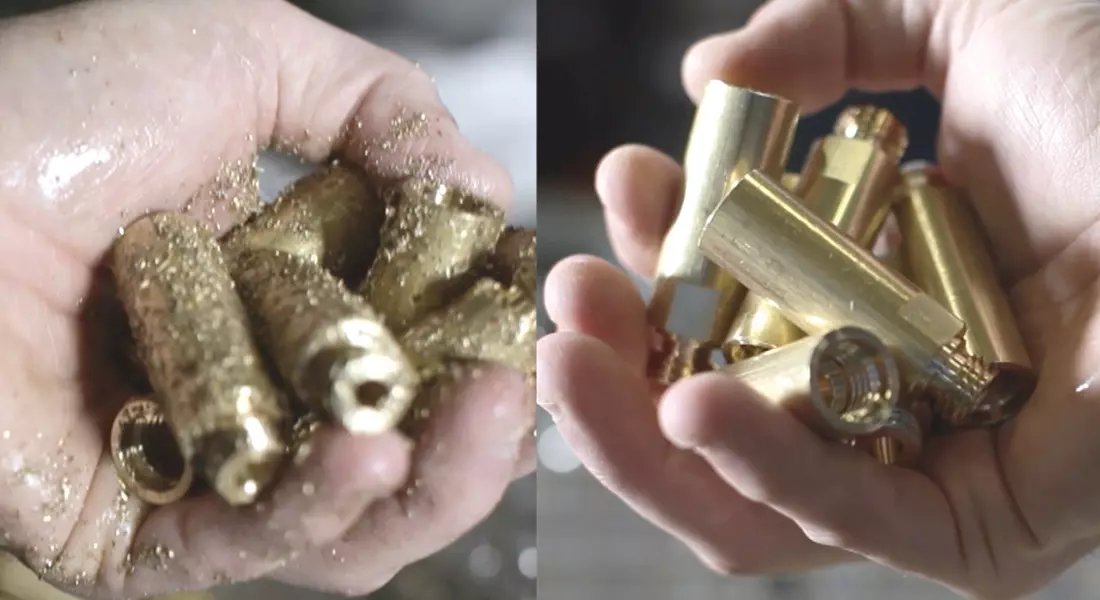
Removal of swarf and oils from small brass parts
The cleaning process consisted of multiple phases, each tailored to achieve the desired cleaning results. The programme includes a 120-second spray phase, followed by a 180-second immersion phase with ultrasonics. This combination of spray and ultrasonic immersion ensures effective penetration and agitation of the cleaning solvent, reaching even complex geometries and hard-to-reach areas of the parts. After the immersion phase, a 120-second vapour rinse is employed to remove any remaining residue and contaminants. This rinse is designed to leave the parts exceptionally clean and free from swarf or grease. Finally, a 240-second drying phase ensures the complete removal of moisture, leaving the parts dry and ready for further processing or assembly. The total cycle time for the cleaning programme is 20 minutes, allowing for efficient and timely cleaning of parts. The vacuum solvent cleaning process with modified alcohol in the KP 100 HMA machine provides a reliable and effective solution for swarf removal and degreasing, meeting the stringent requirements of precision cleaning in the manufacturing industry.
Before Processing
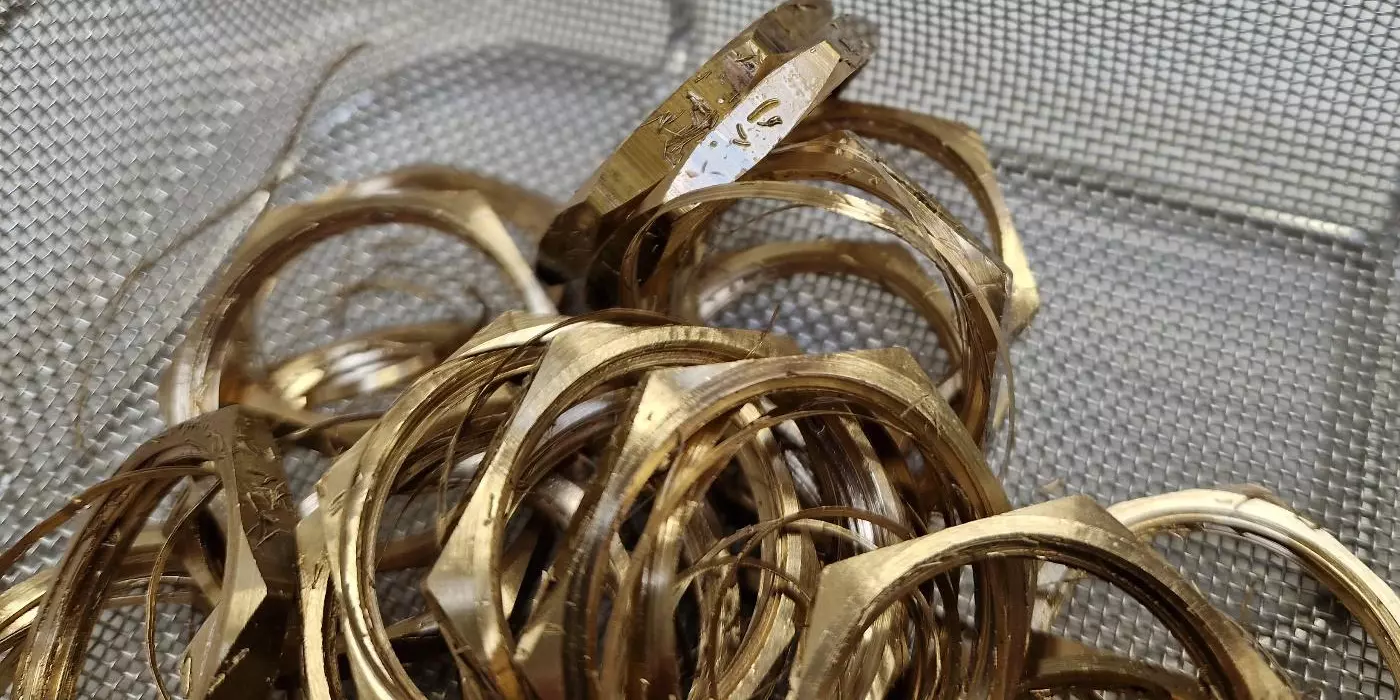
Before and After comparison
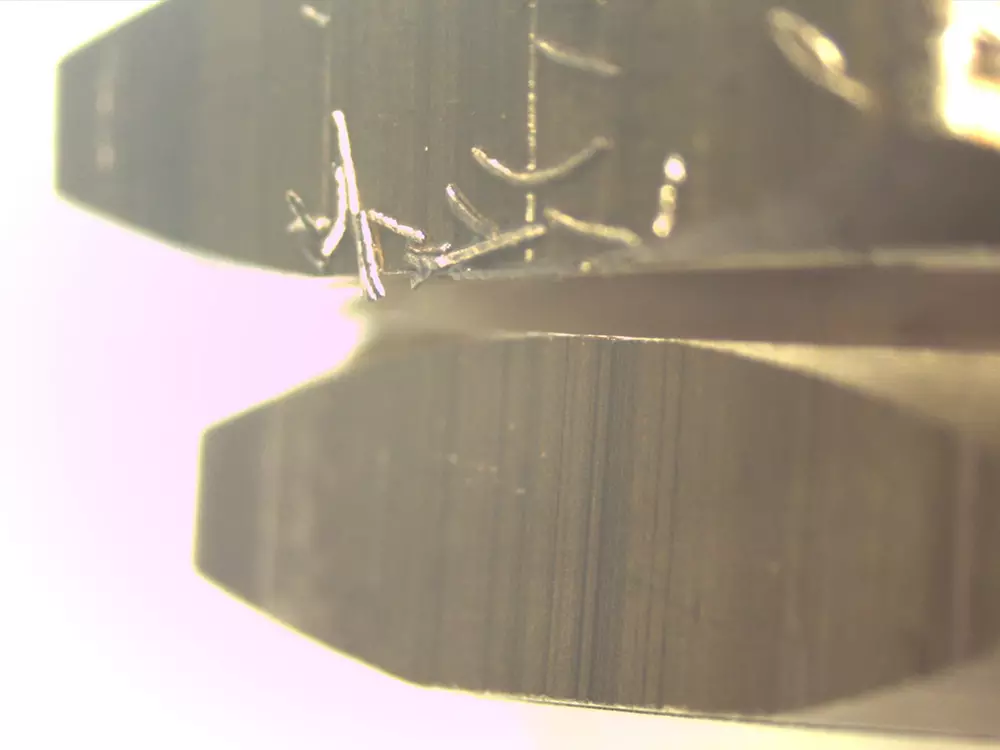
Swarf and oil removal from machined chains
Machine and Parts Positioning
The KP 100 HMA Vacuum Solvent machine is utilised for this cleaning process. The chains to be cleaned are placed in a basket fitted with a thin mesh and an aluminium base. This positioning allows for effective exposure to the cleaning agents and facilitates the removal of oil and swarf from the chains.
Before the process of swarf and oil removal
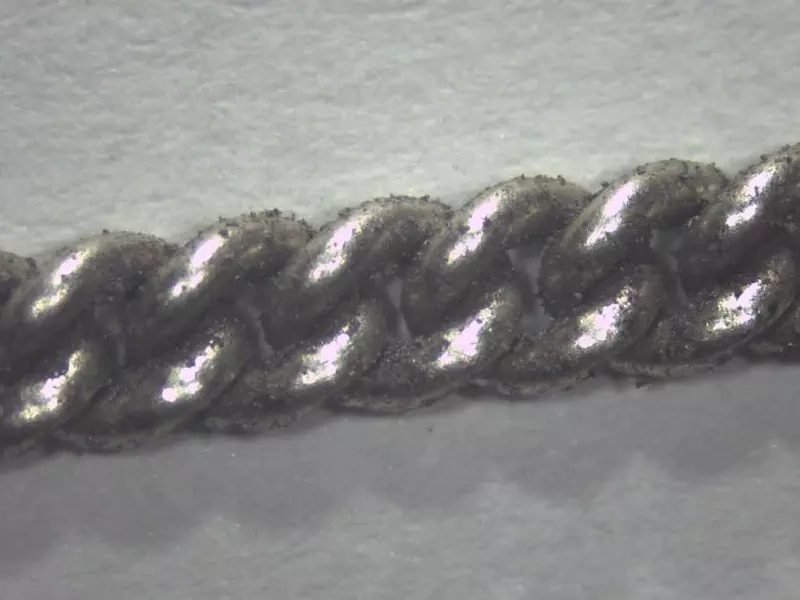
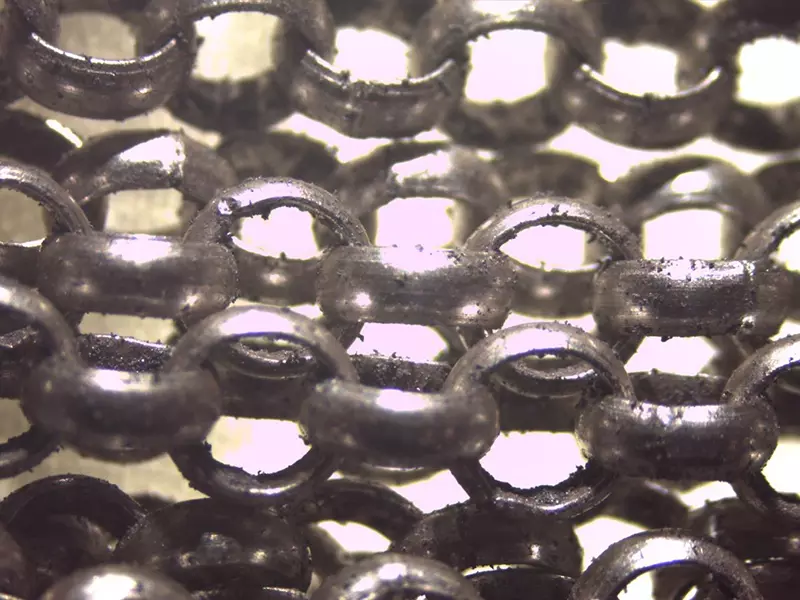

Cleaning process to remove oil and swarf
Step 1: Spraying (1 minute) - The chains are subjected to a fine spray of the modified alcohol solution. This initial spraying action helps to dislodge and loosen any surface contaminants.
Step 2: Immersion with Ultrasonics (3 minutes) - After the spraying step, the chains are immersed in the modified alcohol solution while ultrasonic energy is applied. The ultrasonics generate high-frequency vibrations that create cavitation, causing the cleaning solution to penetrate into tight spaces and remove embedded contaminants effectively.
Step 3: Spray (1 minute) - Following the immersion step, the chains undergo another round of spraying to remove any remaining loose particles or residues.
Step 4: Vapour Rinse (400 seconds) - The chains are exposed to a vapour rinse process, allowing the modified alcohol to evaporate and carry away any remaining contaminants. This stage ensures a thorough cleaning and eliminates the need for manual drying.
Step 5: Drying (300 seconds) - The chains are dried using a drying process that eliminates moisture and ensures the chains are completely dry before further handling or usage.
Results: The inspection of the cleaned chains after the completion of the cleaning programme were effectively cleaned, and all traces of oil and swarf were removed. The cleaning programme successfully eliminated the contaminants from the surfaces of the chains.
Drying: The chains were perfectly dried without any residue of the cleaning solvent. The 300-second drying process ensured the removal of all moisture, preventing any potential issues that could arise from residual moisture.
Contamination: There were no evident spots or signs of contamination observed on the chains. The cleaning programme, along with the KP 100 HMA machine, provided a reliable and efficient cleaning solution.
The utilisation of the Vacuum Solvent machine with a modified alcohol solution, combined with the specific cleaning programme, resulted in successful removal of contaminants and ensured perfectly dried chains without any residue or contamination. The study highlights the efficiency and reliability of the cleaning cycle, which can be employed for similar applications, providing high-quality cleaning results for various industries.
After the process of swarf and oil removal
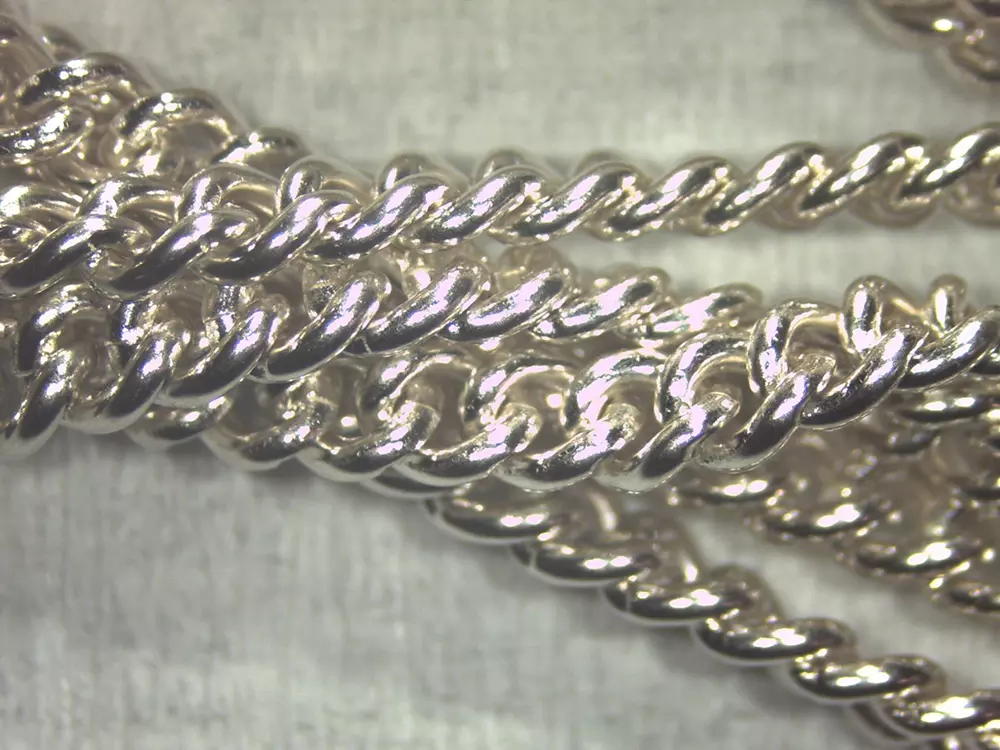
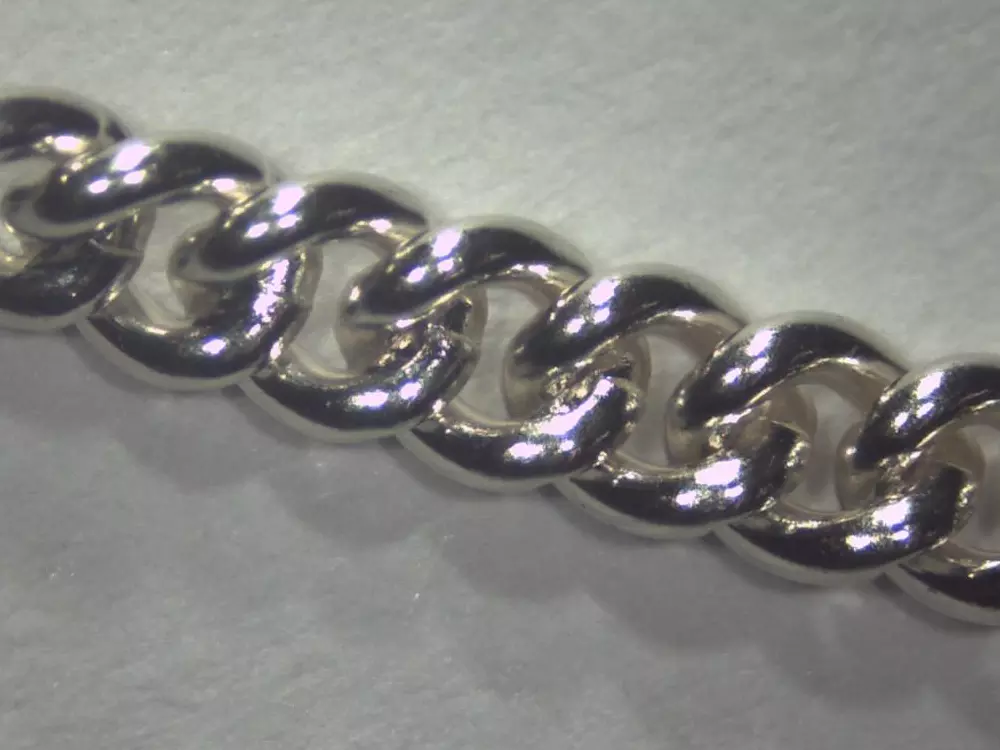
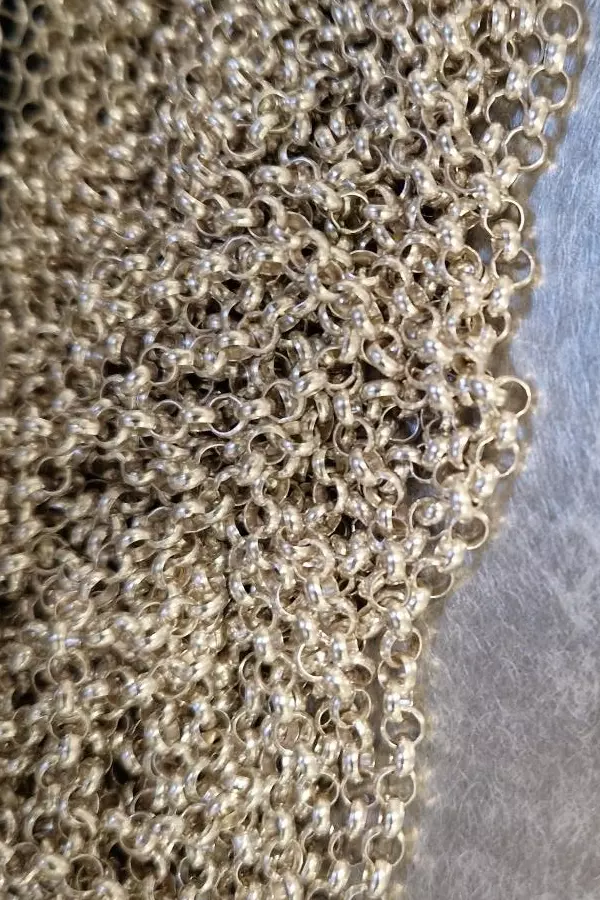
Can swarf be recycled?
In the manufacturing industry, the generation of swarf or metal chips is a common byproduct of machining operations. Traditionally, swarf has been considered waste and often discarded as scrap. However, with increasing environmental consciousness and a drive towards sustainability, the recycling of swarf has gained significance.
Some advanced swarf recycling processes incorporate the use of Vacuum Solvent Cleaning machines. These machines are capable of removing contaminants such as oils, coolants, and lubricants from the swarf. By utilising vacuum and solvent-based cleaning techniques, these machines not only clean the swarf but also allow for the recovery and recycling of the cleaning solvents. This integrated approach enhances the efficiency of swarf recycling by reducing waste and minimising the consumption of cleaning agents.